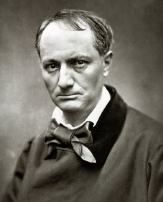Circular Insanity
1851
Jean-Pierre Falret (1794–1870), Emil Kraepelin (1856–1926)
The observation that mood states may swing back and forth rather freely for some people has been made for centuries; the scholar Robert Burton described it in The Anatomy of Melancholy (1621). Jean-Pierre Falret, a French physician at Hôpital de la Salpêtrière, used the term la folie circulaire (“circular insanity”) to describe this vacillation in his patients, and in 1893, Emil Kraepelin, psychiatrist and founder of the modern classification schemes of mental disorders, rechristened “circular insanity” manic-depressive psychosis. The fifth edition of the American Psychiatric Association’s Diagnostic and Statistical Manual of Mental Disorders, or the DSM-5, labels these symptoms as bipolar disorder.
As these various labels indicate, the diagnosis includes the symptoms of depression and mania. In fact, the person may primarily exhibit depression, but if there has been one episode of mania, then the diagnosis is bipolar disorder. It is thought that a person suffering from manic depression will have recurring episodes once it begins.
While the depression side of the disorder is not hard to understand, what does mania refer to? The symptoms of mania are typically extreme, usually representing a break with reality, or psychosis. The mood may be elevated, even euphoric, and to achieve a definitive diagnosis the episode must last for at least a week. In some cases, the person is easily irritated and may become violent. Among the symptoms are extreme goal-directed activity and such rapidity of thought that it can be described as a flight of ideas; often there is a dramatically reduced need for sleep. In some cases, the person may experience delusions of grandeur.
Historically, there has been an association of creativity with manic depression. Prominent musicians, painters, poets, architects, and writers have been among those who have experienced the disorder. Many of them reported that their greatest and most intense moments of creativity occurred while they were in a manic state. The poet Lord Byron, the writer Virginia Woolf, the singer Rosemary Clooney, and many other artists are known to have suffered from the disorder.
SEE ALSO The Schizophrenias (1908), Antipsychotic Medications (1952)

A photograph of French poet Charles Baudelaire, who is thought to have suffered from manic-depressive illness, c. 1863.

This detail from Italian painter Bronzino’s Venus, Cupid, Folly and Time (1546) shows an anguished old woman, thought to represent Jealousy, clutching at her hair.